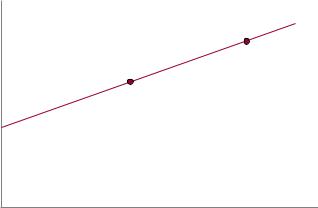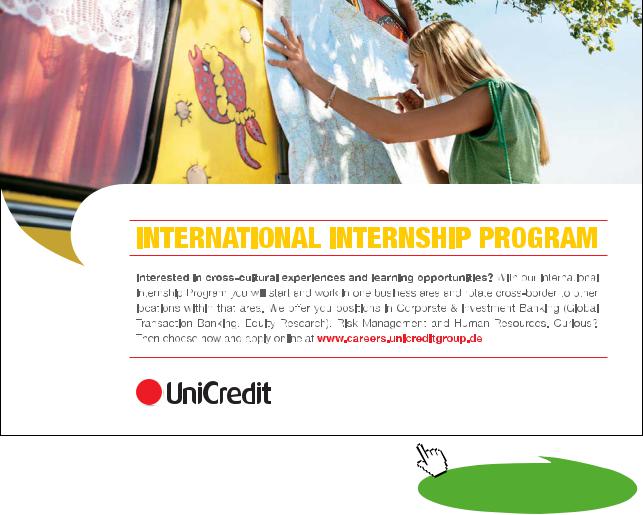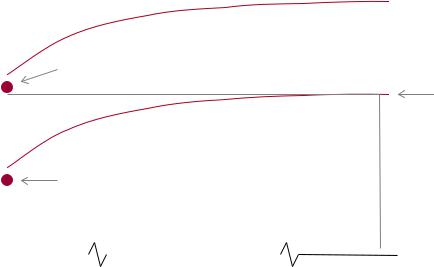
- •1 Essence of banking
- •1.1 Learning outcomes
- •1.2 Introduction
- •1.3 The financial system
- •1.4 Principles of banking
- •1.5 The balance sheet of a bank
- •1.6 Bibliography
- •2 Money creation
- •2.1 Learning objectives
- •2.2 Introduction
- •2.3 What is money?
- •2.4 Measures of money
- •2.5 Monetary banking institutions
- •2.6 Money and its role
- •2.7 Uniqueness of banks
- •2.8 The cash reserve requirement
- •2.9 Money creation does not start with a bank receiving a deposit
- •2.10 Money creation is not dependent on a cash reserve requirement
- •2.11 Is “money supply” a misnomer?
- •2.12 The money identity and the creation of money
- •2.13 Role of the central bank in money creation
- •2.14 How does a central bank maintain a bank liquidity shortage?
- •2.15 Bibliography
- •3 Risk in banking
- •3.1 Learning outcomes
- •3.2 Introduction
- •3.3 The concept of risk
- •3.4 Interest rate risk
- •3.5 Market risk
- •3.6 Liquidity risk
- •3.7. Credit risk
- •3.8 Currency risk
- •3.9 Counterparty risk
- •3.10 Operational risk
- •3.11 Bibliography
- •4.1 Learning outcomes
- •4.2 Introduction
- •4.3 Bank models
- •4.5 Prudential requirements
- •4.6 Bibliography
- •5 Endnotes
Banking: An Introduction |
Risk in banking |
3 Risk in banking
3.1Learning outcomes
After studying this text the learner should / should be able to:
•Elucidate the concept of risk.
•Evaluate the various risks with which banks contend.
•Comprehend the import of risk mitigation techniques.
3.2Introduction
By virtue of borrowing and lending for various periods, at various rates of interest, engaging in many other interest rate-related activities, dealing in foreign exchange, undertaking different investments, dealing in the derivatives markets, etc, banks are exposed to an array of risks like no other institution. The risks faced by banks are usually identified in the statute/s relating to banks in many countries, and are as follows.
•Interest rate risk.
•Market risk.
•Liquidity risk.
•Credit risk.
•Currency risk.
•Counterparty risk.
•Operational risk.
Exposure to these risks makes for the banks being the most regulated and supervised of any financial institution. It will be evident that bank regulators are required to be experienced and astute in the business of banking. It is important that they be aware of innovations and worldwide trends.
In most countries the statute/s relating to banks makes it compulsory that banks have a robust risk management function, and that the board of directors has a risk management committee.
Each of the risks mentioned above is discussed below, but after we introduce a brief discussion on the concept of risk.
Download free eBooks at bookboon.com
72

Banking: An Introduction |
Risk In Banking |
3.3The concept of risk
Most19 financial intermediaries owe their existence to risk. They offer liabilities that are “convenient” to the holder; one of these conveniences is the taking on risk on behalf of the liability holder. The biggest risk takers are the banks, which someone once described as risk machines. This is an apt description, because they are exposed to all the risk-types. But, to go back to basics, what is risk?
The celebrated Prof Harry Markowitz teaches us that risk cannot be divorced from return: the risk of an asset has no meaning except with reference to the portfolio in which the asset is held.20 Financial intermediaries, like any business, endeavour to maximise profits and shareholder value, and risk is central to this endeavour. Banks make extensive use of leverage (borrowing in the form of deposits and loans) in order to achieve profits. The minimum a bank can earn without risk is the risk-free rate (rfr), i.e. the treasury bill or government bond rate, and higher returns beyond this rate of return are associated with higher risk (called the risk premium), as shown in the Figure 1.
Download free eBooks at bookboon.com
73 |
Click on the ad to read more |

Banking: An Introduction |
Risk In Banking |
Expected |
Capital market line (CML) |
|
|
return |
|
|
All share index |
Bonds
Risk-free rate (TB / government bond rate) 
Risk = standard deviation
Figure 1: relationship between risk & return
Thus, financial intermediaries demand a higher return as the risk profile increases, and they attempt to maximise return for a given level of risk or minimise risk for a given level of return (the line is called the capital market line – CML).
Risk is usually defined as the uncertainty of future outcomes or the probability of an adverse outcome.21 It is usually measured as the volatility or standard deviation of returns around the mean return. Profitability is therefore dependent on the management of risk, and it will be obvious that inadequate risk management could threaten the solvency of the financial intermediary. It is important to keep in mind that risk management is core to financial intermediaries, particularly banks, because they “work” with financial liabilities and assets, as opposed to corporate entities, for example, because their core business is usually related to real, not financial, assets. Inadequate risk management by corporate entities can bring about losses, but it is unlikely to endanger their solvency.22
It is important to mention at the outset that in modern day financial markets banks are able to hedge virtually every aspect of interest costs and returns. For example, a bank can hedge its margin (with interest rate swaps); it can ensure a return of a bond (with options); it can introduce caps and floors on rates paid and earned, etc. However, what does this mean? The answer is straightforward: the financial intermediary is mitigating risk, and in doing so it is pushing itself down the CML to lower earnings.
What is the conclusion? It is that banks must take on risk in order to be attractive as an investment. The trick is the risk-reward trade-off. It is for this reason that the management rules of banks in respect of risk should be such that the risk-taking process is not constrained to the extent that risk is eliminated. Financial intermediaries cannot be too prudent.
Download free eBooks at bookboon.com
74

Banking: An Introduction |
Risk In Banking |
Is there a way to reduce risk without compromising return? The answer is a resounding “yes”, and it is embodied in the portfolio theory principle: diversification and correlation. The very essence of the Harry Markowitz thesis in respect of portfolio management is that risk is reduced by diversifying the portfolio provided that the assets in the portfolio are not perfectly positively correlated, and that risk is further reduced as correlations move from +1 to -1. Banks are usually well-diversified.
3.4Interest rate risk
3.4.1Definition
Interest rate risk is the risk of expected earnings being influenced negatively as a result of changes in the pattern and level of interest rates. As discussed earlier, banks are intermediaries between lenders and borrowers and their liabilities and assets are not matched in terms of tenor (term to maturity) and interest rate type (fixed or floating), because the lenders have different requirements to the borrowers. The raison d’être of banks is to accommodate lenders and borrowers. They are thus exposed to interest rate risk.
Download free eBooks at bookboon.com
75 |
Click on the ad to read more |
Banking: An Introduction |
Risk In Banking |
There are three elements to interest rate risk:
•The bank margin. Banks endeavour to get highest rates they can negotiate on assets (MD and NMD), and the lowest rates they can negotiate on liabilities (deposits and loans); the difference between these is the bank margin.
•The interest rates are either floating (variable) or fixed.
•The term to maturity (tenor) of the fixed rate assets and liabilities.
Let us examine the meaning of floating / fixed rates and their significance in banking:
•Floating means that the rates are repriced frequently, and the accepted definition of floating is call (one day) to three months. Examples:
-- Liabilities:
■■A call deposit at the call deposit rate – the rate can change daily (it does not but it can).
■■A deposit taken for 12 months at KIR23+0.3% – the rate is repriced every 91 days at the
then prevailing KIR+0.3%. -- Assets:
■■An overdraft facility at prime rate (PR) – like the call deposit rate, the rate can change daily, but it does not.
■■Mortgage for 20 years at PR-0.5% – immediately above applies.
•Fixed means that the rate is fixed for the term. Examples: -- Liabilities:
■■A 12-month deposit at 8% pa.
-- Assets:
■■A 24-months loan to Mr A at 12% pa.
■■A 30-year government bond at 9.35% pa.
Download free eBooks at bookboon.com
76

Banking: An Introduction |
Risk In Banking |
Interest |
|
|
|
|
|
|
|
rate / ytm |
|
|
|
|
|
YCGB 2 |
|
(%) |
|
|
|
|
|
|
|
10.0% |
|
|
|
|
|
|
|
9.5% |
|
Call money rate = 9.4% |
YCGB 1 |
||||
|
|
|
|
|
|||
|
|
|
|
|
|
9.35% |
|
9.0% |
|
|
|
|
|
|
|
8.5% |
|
Call money rate = 8.4% |
|
|
|||
|
|
|
|
||||
8.0% |
|
|
|
|
|
|
|
|
|
|
|
|
|
|
|
|
|
|
|
|
|
|
|
|
|
|
|
|
|
|
|
1 day |
|
|
10 years |
20 years |
|||
|
|
|
|
Term to maturity |
|
|
|
Figure 2: yield curve shift
Allow us to present an example (see Figure 2: YCGB = yield curve24 for government bonds; YCGB 1 = now and YCGB 2 = one-year later): if a bank buys a 20-year tenor bond now at 9.35% pa, and funds it with call money deposits at a current rate of 8.4% pa, the gross25 margin is 0.95%, and interest rate risk is high. If after a year, the yield curve has shifted to the YCGB 2 position, the margin has disappeared: the rate on the bond remains at 9.35% for 20 years, and the call money rate rose to 9.4%. (It will be evident that there are also other risks at play here: liquidity risk and market risk.)
Similarly, if a bank provides an overdraft facility at PR now (and it is used) and funds it with a 2-year fixed deposit, it is facing interest rate risk: the margin will be wiped out if interest rates decline sharply in the near future. The funding rate is fixed, while the asset rate is floating.
3.4.2Ideal and extreme portfolios
Ideally, a bank would like to match liabilities and assets in terms of tenor, and have the rates on both sides being either fixed or floating, or a matched combination (see Figure 3; variable = floating), and thus enjoy a fixed margin without any interest rate risk.
Download free eBooks at bookboon.com
77

Banking: An Introduction |
Risk In Banking |
Liabilities
Fixed rate liabilities (FRL) LCC 400 billion
Variable rate liabilities (VRL) LCC 600 billion
Assets
Fixed rate assets (FRA) LCC 400 billion
Variable rate assets (VRA) LCC 600 billion
Total liabilities and assets = LCC 1 000 billion
Figure 3: interest rate repricing gap analysis
This seems to be an obvious statement, but in it lurks a problem: floating means call to 3 months, and fixed means 3 months to 20+ years. Therefore, if a bank funds a 20-year tenor fixed-rate bond with a fixed deposit of 4 months at a fixed rate, it still has interest rate risk. Banks are (usually) acutely aware of this and solve the problem with their risk management techniques outlined below, the most important one being the time band repricing gap analysis (which is a more detailed analysis than the one indicated in Figure 3 – see later).
But this is not possible: inevitably some of their liabilities will be of a maturity that is different from the maturity of their assets, and banks are also not able to have the rates on both sides either fixed or floating. Before we discuss this in more detail, we present the extreme cases of interest rate risk.
Download free eBooks at bookboon.com
78

Banking: An Introduction |
Risk In Banking |
Liabilities
Variable rate liabilities (VRL) LCC 1 000 billion
Assets
Fixed rate assets (FRA) LCC 1 000 billion
Total liabilities and assets = LCC 1 000 billion
Figure 4: expectation = rates will fall
Figure 4 presents the extreme case of all liabilities = VRL and all assets = FRA. This portfolio construct represents the view that interest rates are about to fall. As interest rates fall, the asset rates do not change (because they are fixed rates), but the liabilities are re-priced frequently.
AU AARHUS
UNIVERSITY
BUSINESS AND SOCIAL SCIENCES
AU HERNING
foCus ON THE BUSINESS LIFE
Application |
deadline |
|
15 |
|
|
|
March |
|
Focus on the business life
At AU Herning, we priorities working in close contact with the industry and the individual students, and we place emphasis on both social and academic development of the individual. AU Herning has won numerous awards and been honored for its innovative approach to education and business.
Applied research and business focus
At AU Herning, we combine education, applied research and a business focus as our aim is to promote innovation, growth and development in close interaction with industry.
Follow us on
Learn more at
hih.au.dk/en
Club AU Herning
AU Herning
Birk Centerpark 15 DK-7400 Herning +45 8716 4700 info@hih.au.dk
AT AU HERNING, WE OFFER THE FOLLOWING INTERNATIONAL STUDY PROGRAMMES
Business Economics
Communication
Engineering
! " # $ %
Download free eBooks at bookboon.com
79 |
Click on the ad to read more |

Banking: An Introduction |
Risk In Banking |
Liabilities
Fixed rate liabilities (FRL) LCC 1 000 billion
Assets
Variable rate assets (VRA) LCC 1 000 billion
Total liabilities and assets = LCC 1 000 billion
Figure 5: expectation = rates will rise
Figure 5 presents the extreme case of all liabilities = FRL and all assets = VRA. This portfolio construct represents the view that interest rates are about to rise. As interest rates rise, the rates on liabilities do not change, and the rates on assets are re-priced frequently.
If the interest rate expectations in these two examples are correct, the shareholders will be in high spirits (and the bonuses high). However, these portfolio constructs are extremely risky. If interest rates move in the opposite direction to that forecast, the bank/s will be insolvent within a short period, and depositors will lose much of their money.
3.4.3Reality
As said above, a bank ideally would like to match liabilities and assets in terms of tenor, and have the interest rates on both sides either fixed or floating (or a matched combination), and thus enjoy a fixed margin. The reality is that the liabilities and assets of banks are not matched in terms of maturity and re-pricing frequency (i.e. fixed or floating). Banks have a variety of liabilities and assets in terms of repricing frequency.
Download free eBooks at bookboon.com
80

Banking: An Introduction |
Risk In Banking |
Liabilities
Fixed rate liabilities (FRL) LCC 200 billion
Variable rate liabilities (VRL) LCC 800 billion
Assets
Fixed rate assets (FRA) LCC 400 billion
Variable rate assets (VRA) LCC 600 billion
Variable interest rate gap
=VRL – VRA
=LCC 800b – LCC 600b
=+LCC 200 billion
Total liabilities and assets = LCC 1 000 billion
Figure 6: interest rate repricing gap analysis
An example is presented in Figure 6. The interest rate gap (IRG) is:
IRG = VRL – VRA
=LCC 800 billion – LCC 600 billion
=LCC 200 billion.
It will be clear that the bank’s margin (which can also be called a net interest margin) is at risk. Because VRL > VRA, meaning the bank has more variable rate liabilities (also aptly called interest-sensitive liabilities) than variable rate assets (interest-sensitive assets), if interest rates in general rise, the bank has to reprice the “gap”, i.e. LCC 200 million of liabilities (that does not have a counterpart asset) at increasing rates. Obviously, LCC 600 million of the VRL is matched by the LCC 600 million VRA, and the rates on both will move up together. It should also be clear that if rates fall, the bank would achieve financially (the NIM will increase), in that LCC 200 million of unmatched liabilities are repriced at decreasing rates.
In general:
•If banks have excess FRA, they are vulnerable to rising interest rates.
•If banks have excess FRL, they are vulnerable to falling rates.
Download free eBooks at bookboon.com
81
Banking: An Introduction |
Risk In Banking |
3.4.4Management of interest rate risk
3.4.4.1 Introduction
In essence, banks have two options in terms of managing interest rate risk:
•“Physically” change the nature of their liabilities and assets according to their risk appetite, i.e. only do the business that suits the risk profile of the bank.
•Make use of money market and other derivative instruments to change the nature of their liabilities and assets according to their risk appetite.
The first option is not an option because banks are in the business of gathering in clients and retaining their business by doing the business that the clients wish to do. In most countries the banks make use of the second option, i.e. use the derivatives markets to change the profile of their assets and liabilities. The main instruments used are:
•Interest rate swaps.
•Interest rate caps and floors (and collars).
•Forward rate agreements.
•Interest rate forwards.
•Interest rate futures and options on these futures.
•Options on spot market instruments.
•Swaptions (i.e. options on interest rate swaps).
•Repurchase agreements.
The management of interest rate risk cannot take place without the bank being able to measure the risk. There are two main measures of interest rate risk:
•Interest rate repricing gap analysis.
•Duration analysis.
3.4.4.2Interest rate repricing gap analysis
Let us take the example of one bank (the bank and the currency are not disclosed, but it is a true example). This analysis shows that despite the existence of fixed and floating rates, and flexibility of tenor for clients, the bank has managed to keep interest rate risk at a low level. The majority of deposits and assets are in the call to 3-month time band, and the mismatch is small. The total mismatch is only 6% of total assets. Note that the bank may have also engineered (with the use of derivatives) a given portfolio to this preferred portfolio, which is in harmony with its interest rate view.
Download free eBooks at bookboon.com
82

Banking: An Introduction |
|
|
|
|
Risk In Banking |
||
|
|
|
|
|
|
|
|
Repricing maturity |
|
Call – 3 |
4–6 months |
7–12 |
Over 12 |
Non-rate |
Total |
period |
|
months |
|
months |
months |
sensitive |
|
|
|
|
|
|
|
|
|
Total assets |
|
159 275 |
5 664 |
2 476 |
13 103 |
32 256 |
212 774 |
|
(= 75%) |
||||||
|
|
|
|
|
|
|
|
|
|
|
|
|
|
|
|
Total liabilities and |
|
148 780 |
6 563 |
3 707 |
7 566 |
46 158 |
212 774 |
shareholders’ funds |
|
(= 70%) |
|||||
|
|
|
|
|
|
||
|
|
|
|
|
|
|
|
Interest rate sensitivity |
|
10 495 |
(899) |
(1 231) |
5 537 |
(13 902) |
- |
gap |
|
(= 5%) |
|||||
|
|
|
|
|
|
||
|
|
|
|
|
|
|
|
Cumulative interest rate |
|
10 495 |
9 596 |
8 365 |
13 902 |
- |
- |
sensitivity gap |
|
(= 6%) |
|||||
|
|
|
|
|
|
||
|
|
|
|
|
|
|
|
Table 1: interest rate repricing gap analysis (LCC millions)
Banks are required to submit to the regulator (usually the central bank) a monthly return setting out information pertaining to interest rate risk. One central bank’s26 return states that its purpose is to determine:
“(i) the repricing gap between assets and liabilities before and after the impact of derivative instruments are taken into account; (ii) the expected cumulative impact on net interest income resulting from a two per cent increase in lending rates from existing levels with a correlated change in funding rates, before and after the impact of derivative instruments are taken into account; and (iii) the expected level of selected key interest rates.”
GOT-THE-ENERGY-TO-LEAD.COM
We believe that energy suppliers should be renewable, too. We are therefore looking for enthusiastic new colleagues with plenty of ideas who want to join RWE in changing the world. Visit us online to find out what we are offering and how we are working together to ensure the energy of the future.
Download free eBooks at bookboon.com
83 |
Click on the ad to read more |
